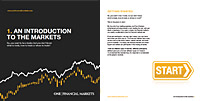

Asia FX falls as Fed jitters boost dollar, central banks awaited
Investing.com -- Most Asian currencies retreated on Monday, while the dollar traded near two-month highs amid uncertainty over whether the Federal Reserve would hike interest rates in June, with focus now turning to central bank meetings in India and Australia this week.
The dollar advanced in Asian trade, with the dollar index and dollar index futures adding about 0.1% each. Both instruments were also close to two-month highs as data on Friday showed nonfarm payrolls jumped far more than expected in May, pointing to a robust U.S. labor market.
The reading, coupled with stronger-than-expected print on the Fed’s preferred inflation index earlier in May, presented a hawkish outlook for the central bank in June.
But a slew of Fed officials touted the possibility of a pause in rate hikes this month, calling on the Fed to take stock of its year-long rate hike crusade against inflation. This brewed some uncertainty over how the central bank may act next week, especially given that other facets of the U.S. economy appear to be slowing.
Still, the central bank is widely expected to keep rates higher for longer, which presents more headwinds to risk-heavy Asian markets.
China’s yuan fell 0.2%, moving back towards a six-month low following a weak daily midpoint fix from the People’s Bank. The currency took little support from a private survey showing stronger-than-expected growth in China’s services sector, given that overall economic activity still remained under pressure.
Focus this week is on Chinese trade and inflation data for more cues on Asia’s largest economy, as it struggles to recover from three years of COVID disruptions. A swathe of mixed economic readings for May pointed to slowing momentum in the economy after a strong start to the year.
Markets are also awaiting central bank meetings in Australia and India this week, although both banks are expected to keep rates steady after sharp hikes over the past year. But there also exists a slim chance of a rate hike from the Reserve Bank of Australia, given that inflation unexpectedly rose in April.
The Indian rupee was flat, while the Australian dollar fell 0.3%.
Waning safe haven demand, after the passing of a bill to raise the U.S. debt ceiling, pushed the Japanese yen back to the 140 level to the dollar, while disappointing service sector activity data for May also weighed.
The Thai baht was the worst performer in Asia, down 0.7% amid continued uncertainty over the formation of a new government in the country.
Begin trading today! Create an account by completing our form
Privacy Notice
At One Financial Markets we are committed to safeguarding your privacy.
Please see our Privacy Policy for details about what information is collected from you and why it is collected. We do not sell your information or use it other than as described in the Policy.
Please note that it is in our legitimate business interest to send you certain marketing emails from time to time. However, if you would prefer not to receive these you can opt-out by ticking the box below.
Alternatively, you can use the unsubscribe link at the bottom of the Demo account confirmation email or any subsequent emails we send.
By completing the form and downloading the platform you agree with the use of your personal information as detailed in the Policy.






